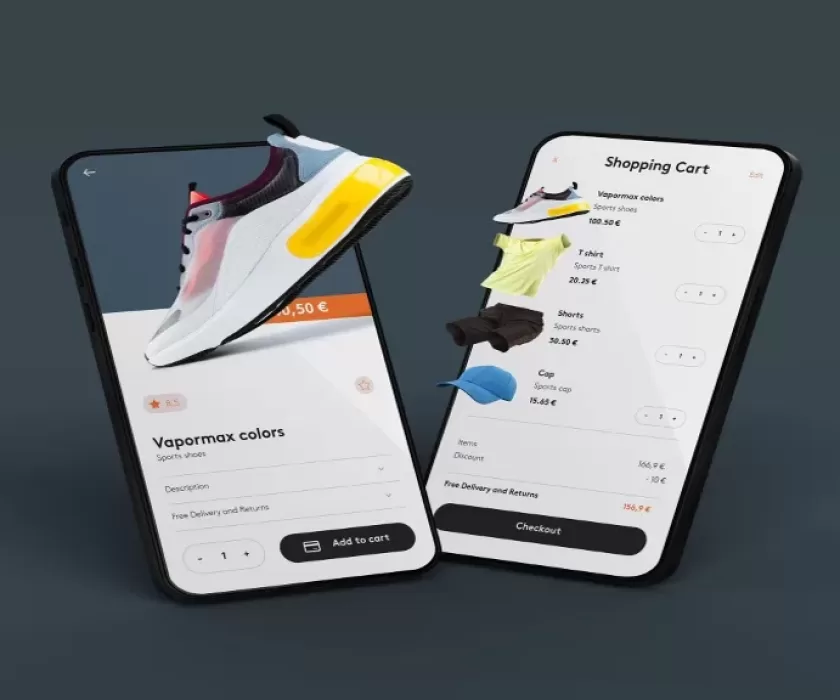Ensuring that your website is responsive and adaptable to different devices has become paramount in today’s digital landscape. With the increasing use of smartphones, tablets, and various screen sizes, a responsive website is crucial to retaining visitors. It makes websites faster, more accessible, and easier to navigate, providing a seamless user experience. But how to make a website responsive all devices? This blog will explore the key steps and industry best practices for making a website responsive for all devices. Let’s dive in and discover how to create a responsive website that captivates users on every device.
What is a responsive website design?
A responsive website is a web design that adapts and responds seamlessly to different screen sizes and devices. It ensures optimal viewing and usability by automatically adjusting the layout, content, and functionality based on the user’s device. Designers and developers use techniques like fluid grids, flexible images, and CSS media queries to make a website responsive. And to get the answer to how to make a website responsive, follow the upcoming steps.
Steps of how to make a website responsive for all devices?
Use Responsive Web Design (RWD):
The first step in learning how to create a responsive website is to simplify the development process. You need to ensure consistent responsiveness across different devices by utilizing responsive frameworks like Bootstrap or Foundation. Embracing responsive web design (RWD) is the foundation for making your website responsive. RWD employs fluid grids, flexible images, and CSS media queries to adapt the layout and content based on the device.
Flexible grids allow the website’s layout to adjust proportionally based on the screen size. It ensures content remains readable and properly aligned, providing a responsive website design. Fluid images are resized proportionally to fit different screen resolutions, preventing them from being too large or too small. To make a website responsive, you can use CSS media queries. It applies specific styles and layouts based on the characteristics of the device. It includes screen width, orientation, and resolution. Implementing RWD ensures your website looks and functions well on various devices, providing a consistent user experience.
- Prioritize a mobile-first approach:
With mobile devices dominating internet usage, adopting a mobile-first approach is vital for a responsive website. A mobile-first approach involves designing and developing the website primarily focusing on mobile devices. These devices usually include smartphones and tablets. This approach ensures that your website delivers an optimal experience on smartphones with limited screens and slower connection speeds.
To make your website responsive, prioritize mobile design & optimize layout, content, and functionality for mobile visitors. Simplifying navigation, using larger fonts and touch-friendly buttons, and ensuring fast load times can help you get a responsive website. A mobile-first approach ensures that the website’s core functionality and user experience are well-suited for mobile devices before expanding to larger screens.
- Optimize content and images:
Content and images play a significant role in making a website responsive. It’s essential to optimize both content and images for different screen sizes and devices to create a responsive website. Content optimization involves considering text length, readability, and formatting to ensure it adapts well to all screens. You can make a website responsive by using shorter paragraphs, concise headings, and collapsible menus for better mobile readability. On the other hand, image optimization focuses on reducing file sizes, optimizing image dimensions, and implementing responsive image techniques. You can improve the website’s load times by compressing and resizing images and utilizing techniques like lazy loading. It also provides a smoother user experience across devices with varying bandwidth limitations.
- Implement media queries:
Leveraging media queries can help you learn how to create a responsive website. Media queries are CSS rules that allow developers to apply specific styles and layouts based on the device’s screen size. You can use media queries to set breakpoints, at which the website’s layout and design will adapt to different screens. These breakpoints make your website responsive by setting common device widths or customizing it to target specific screen resolutions. Media queries enable developers to adjust font sizes, spacing, and positioning. It also ensures that content remains legible and visually appealing on different devices and gives you a responsive website design. By implementing media queries effectively, a website can provide an optimized user experience across various screen sizes and orientations.
- Test Across Multiple Devices:
Testing a website across multiple devices is crucial to ensuring its responsiveness and functionality. It is essential to evaluate how the website appears and performs on various devices, including smartphones, tablets, and desktops. This testing process helps in developing a responsive website. It includes identifying any layout issues, content misalignments, or functionality glitches that may occur on specific devices. Using device simulators to interact with the website and navigate its pages ensures a responsive website. It also ensures that all elements are displayed correctly and functioning as intended. By thoroughly testing multiple devices, developers can address issues and fine-tune the website’s responsiveness to deliver a seamless user experience across the entire device spectrum.
- Ensure touch-friendly navigation:
With touchscreen devices being prevalent, it is essential to know that optimizing touch interactions for navigation can make your website responsive. Desktop navigation styles such as hover menus may not work effectively on touchscreens. Navigation components should appropriately handle touch gestures to deliver a user-friendly experience. You can increase the size of clickable elements, such as buttons and links, to make a responsive website. It provides ample spacing between clickable elements to prevent accidental taps and implements swipe or slide functionality for intuitive navigation. By prioritizing touch-friendly navigation, users can effortlessly interact with the website using their fingertips, enhancing overall usability and engagement.
- Monitor Performance:
It is critical to keep monitoring your website’s performance. You should always be looking for innovative methods & best practices to answer the question of how to make a website responsive. Monitoring the performance of a responsive website is an ongoing task to ensure an optimal user experience. As users access the website from different devices and locations, evaluating its loading speed and responsiveness is crucial.
Monitoring tools and techniques can help measure critical performance metrics such as page load times, server response times, and resource utilization. You can identify and address any performance bottlenecks by regularly analyzing these metrics. You can also optimize server configurations and streamline the delivery of website assets, ensuring a responsive website. This continuous monitoring helps maintain a fast and reliable website experience across all devices, reducing bounce rates and improving user satisfaction.
Conclusion:
Creating a responsive website that caters to all devices is no longer a choice but a necessity in the digital era. You will have the answer to how to make a website responsive for all devices? by implementing the steps outlined in this guide. We hope this article has helped you.
Recommended Reads
Top 10 SEO Tools to Dominate Search Engine Rankings






hey thanks for sharing a amazing article post on how to make a website responsive for all devices
After reading this, I was highly impressed by the high caliber work and insightful ideas. I just wanted to congratulate the author and wish them the best. Amazing post on how to make a website responsive for all devices
Very useful Post and it is very useful and knowledgeable.
I appreciate you giving us the information on how to make a website responsive for all devices. It’s worthwhile to read this essay. I’ll come back to read more posts.
I appreciate you giving this information. I actually learned a lot from it, and it is very instructive. The fantastic article was one you posted.
Nice blog, thanks for sharing with. Keep sharing!!
I really liked reading the content that you provided on how to make a website responsive for all devices , and I learned a lot. It’s quite beneficial to me.
This knowledge is excellent, and I’m moved by the way you write about this subject in your posts. Continue sharing!
Fantastic website for learning about on how to make a website responsive for all devices.
Your detailed instructions on were really informative. Your dedication to presenting truthful information that can be used is very admirable. Thank you so much
Wonderful blog you have here. These days, it’s challenging to locate writing of your quality. I genuinely value individuals like you! Be careful!
I adore it when people get together and exchange ideas, fantastic blog on how to make a website responsive for all devices, keep it up!
Your blog is incredibly informative, and your advice is presented elegantly. Many thanks
This is the most straightforward but knowledgeable post I’ve ever read
You have shared a great and unique tips
A very good and decent post on how to make a website responsive for all devices. Regarding the exact information I was looking for, I found this to be quite enlightening. Thank you for this post, and please continue.
saved this to my favorite so I can read it again every time I have free time to do so. Thanks a lot. Anyhow,
In many aspects, your content is nothing less than fantastic. This is interesting and eye-opening content, in my opinion. I like how much you give thought to your audience and your content.
Simply reading all of your blogs is something I really love. I just wanted to let you know that your effort is appreciated by others like me.
I am continually amazed by the amount of information available on this subject.